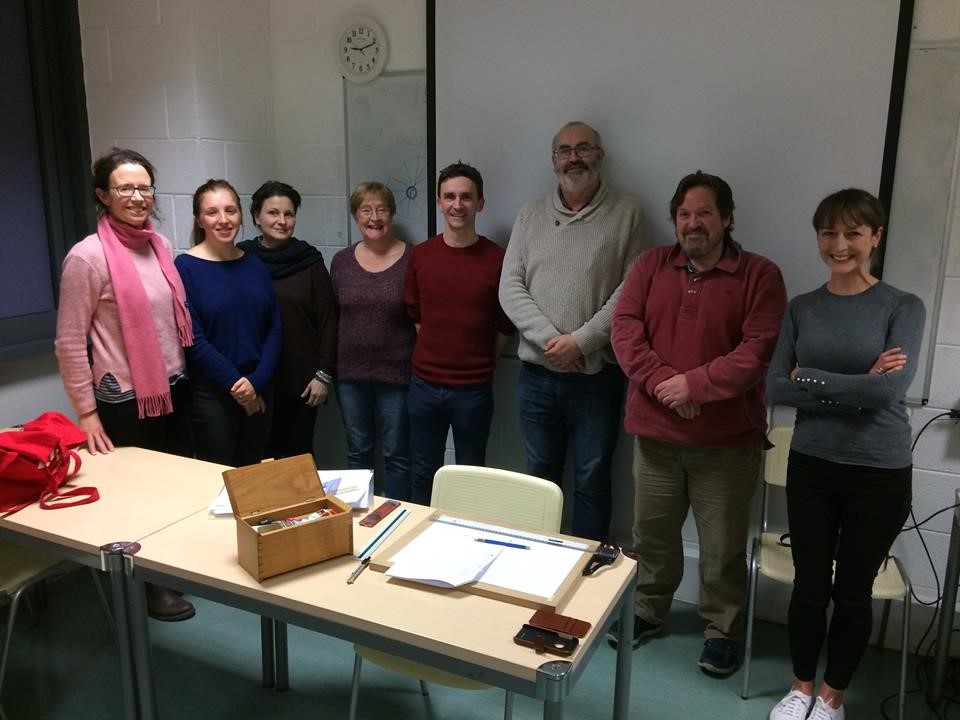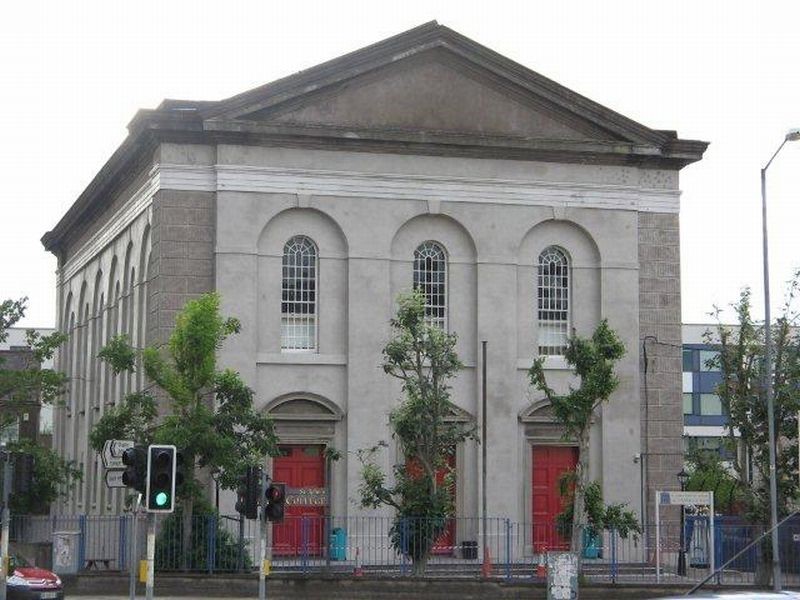Hugh Kavanagh, INTBAU Ireland
Whether you come from a traditionalist or modernist point-of-view, architectural education is a very hot topic at present. The concerns around architectural education are well founded as the system struggles with equipping young architects for the growing challenges that they will face in their careers. However, despite the genuine worry being expressed on all sides, there seems very little consensus as to how the situation can be remedied effectively.
Those of us involved in traditional architecture have long known about the short-comings in architectural education and indeed many of us have experienced them first-hand. Traditionalists are especially sensitive to this because traditions and education are inextricably linked. What I mean by this is that traditions are a form of education in themselves; vessels for transferring knowledge from one generation to the next. Indeed the modernist act of separating traditions away from current architectural practice has been to deny students and practitioners some of our most important and useful tools.
What makes architectural traditions so important to education are that they are concerned with the many subtle aspects of architecture that cannot be written down and as a consequence have been largely accidentally ignored. In fact I would argue that the use of tradition in architectural education allows a far more complete and efficient means of transferring knowledge than books or lectures can ever hope to provide alone. In this way traditional architectural education works best by complimenting and improving the existing educational experience rather than replacing it entirely.
————————————————————————————————————————————–
Finding a niche for traditional architecture in the Irish educational system has not been easy. I have experienced a lot of goodwill, yet I have seen how difficult it is for the current system to adapt to change. I am also sympathetic; students and faculty in schools of architecture are snowed-under with the sheer volume of work required. Regardless of this fact, change is happening and it is encouraging to see traditional architecture forming a small but growing foothold in educational institutions in the UK and the US, such as the studio in Classical Architecture at Kingston University in London and most famously at Notre Dame in Indiana.
To find a place to teach Traditional Architecture, I have had to look outside of the existing 3rd level system. In doing so, I may have inadvertently stumbled upon something far more interesting. What I have found is a welcome home for Traditional Architecture in the chronically overlooked sector that is placed between 2nd and 3rd level education, namely Further Education.
The Further Education sector covers a multitude of diverse odds and ends, ranging from traditional crafts and skills, right up to the most up-to date professional technical training. The type of training that Further Education colleges specialize in has also been overlooked and undervalued by authorities for decades. Thankfully, there has been a recent resurgence in their fortunesdue to the realisation that relying solely on academic 3rd level qualifications has left significant gaps in the skills-base of the workforce.
St. John’s Central College in Cork City is a typical Further Education institution, and this is where I have taught an evening class in Classical Architecture since 2017. With a varied history going back to the 1840’s, St. John’s now accommodates over 1000 students in a diverse range of full-time, part-time and evening courses. These courses vary from animation and film to game design and cloud computing. There is also a significant emphasis on craft and construction, with well-regarded musical-instrument and furniture-making courses as well as architectural drafting and BIM qualifications available.
The openness and support that I have received from the college administration has been incredibly encouraging, as have the responses from the students that I have had the pleasure to teach. This is in stark contrast to my experience at 3rd level where, despite much goodwill, the system seemed trapped under its own weight of expectation.
I must emphasise that the evening class I teach is very, very modest; just 10 lectures covering a broad range of topics from history of architecture to the application of the classical orders. I have also recently developed a number of practical drawing demonstrations and exercises in response to my students’ queries, and these have been especially useful in bringing classicism to life. Whilst it is a foundation course, it is still incredibly valuable and is accessible to all who display an interest.
All education is a delicate balance between hand-holding and being thrown in at the deep end. So what I try to aim for in my teaching is to instil a simple rock-solid foundation that gives students the tools and confidence to explore the traditionally designed built-environment for themselves in the future whether as students or as professionals. This may expand in the future but it is this foundation which is most important for now.
As I look back over the past few years, what occurs to me now is just how comfortably traditional architecture fits into the Further Education sector and in hindsight this now makes perfect sense to me as it replicates in part the kind of vocational education that architectural apprentices would have received in the past. Also, it occurs to me that bringing traditional architectural education to the public through courses like mine could be replicated with relative ease elsewhere. This is because Further Education is so nimble and has always worked away diligently underneath the radar, focusing on practical educational solutions for the real world.
————————————————————————————————————————————–
It’s a cliché to say but I have learned far more through teaching than I could have imagined. One of the most important things that I have learned through this experience is that positivity is key and that focusing on the existing problems in architecture is something that students do not respond well to. I’ve found that when my teaching focuses on the positive aspects of traditionalism, students are immediately energized and empowered. In light of this I have some concerns about the current campaigns to “fight modernism” and constantly point the finger of blame. We must remember that in reality most people already accept that there is a huge problem and just want solutions and not just incriminations.
I know that this may be uncomfortable for some to hear but despite the best of intentions, focusing on the problems of modernism without providing solutions is not helping. This focus on the negative only serves to close down essential dialogue and shore up polarized and entrenched positions. Speaking from experience I have found that it makes my job as an educator a lot more difficult when people have already made up their minds either way. Also I have found that students really don’t understand or care about “mods vs trads”; all they rightly want to know is if what they are learning is going to be useful at the end of the day.
The fact of the matter is that architectural education is not going to change overnight, and the change we need must be sustainable and not just a knee-jerk reaction. We all agree that the system is in need of urgent repair and I firmly believe that traditionalism can play a healing role that will positively support and inspire change from within. It will take time but it is worth remembering that teaching is not just about educating the next generation of architects; they are also educating the next generation of architectural educators too. This is the power of tradition in action.
————————————————————————————————————————————–
It’s also important to note that education is rapidly changing with disruptive technologies set to play an increasingly important role in the future. Students are becoming more informed, with many questioning the relevance of cripplingly expensive academic 3rd level courses and instead choosing alternative learning paths. Leading universities recognise this and through platforms like edx.org are rapidly investing in their online offerings to capture some of this educational diversification and as well as allowing for the growing area of continuous professional development.
Traditional architectural education must seize this opportunity as formal academic education becomes more fractured. Paths to education are becoming more diverse than ever as many professions begin to overlap too. And it’s not just for architects. Artisans, urban planners, policy-makers and designers of all types could benefit in a real way from learning the foundations of traditional design.
I’m very aware that my course at St. John’s is tiny and that architectural education has some very big problems. But sometimes big problems don’t always need a single big solution; sometimes we overlook the many very small solutions right in front of us.
The future of traditional and classical architectural education is very bright if we recognise the growing range of learning routes that new technology can provide and by broadening out the scope of our educational focus. This simply reflects the growing reality facing educational institutions of all kinds. The existing architectural system seems to be lagging behind this paradigm shift and now is a perfect time for traditional classical architecture to set out its stall and grow. The best way we can do this is by emphasising the positive and appealing to the broad middle ground that just wants better buildings for their families and their communities.
Images:
1. Using models and books in lectures
2. Using simple models like Jenga blocks to explain tectonics, inter-columnation and superposition.
3. Class of 2017
4. St. John’s Central College
5. A typical drawing exercise – designed to give students some basic technical drawing skills and by teaching the alphabet of architecture; classical mouldings




